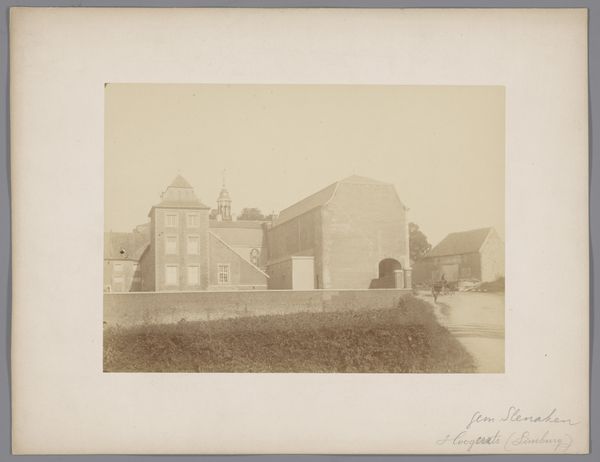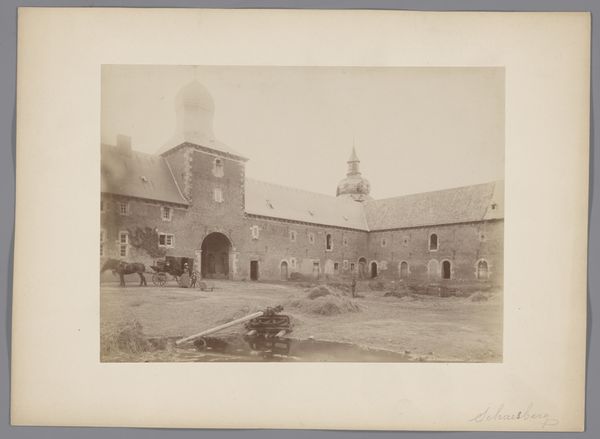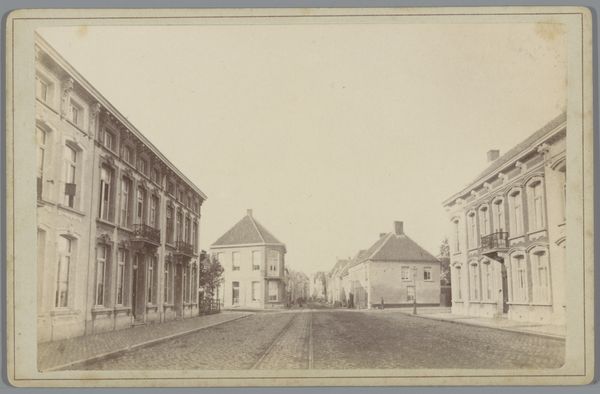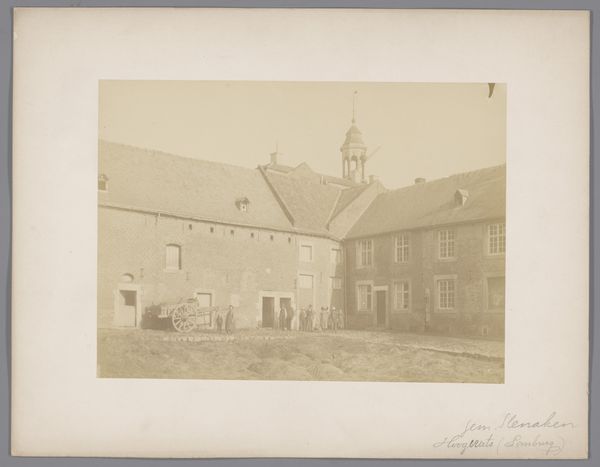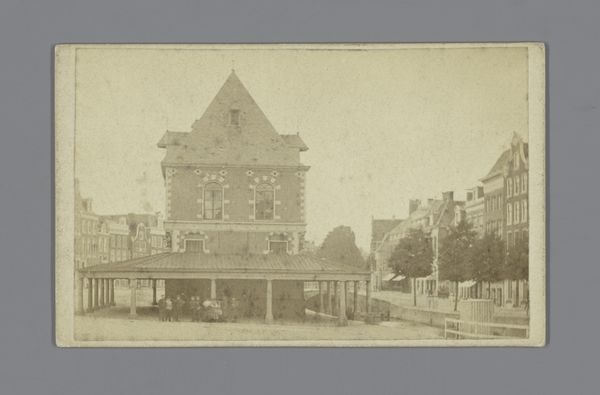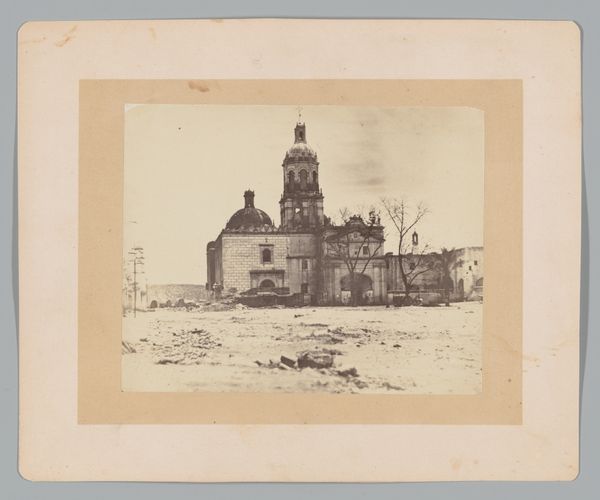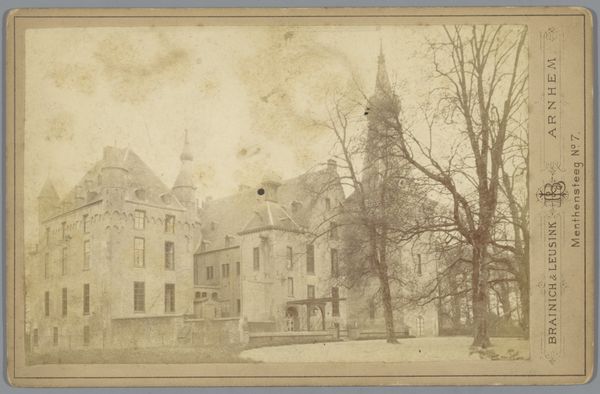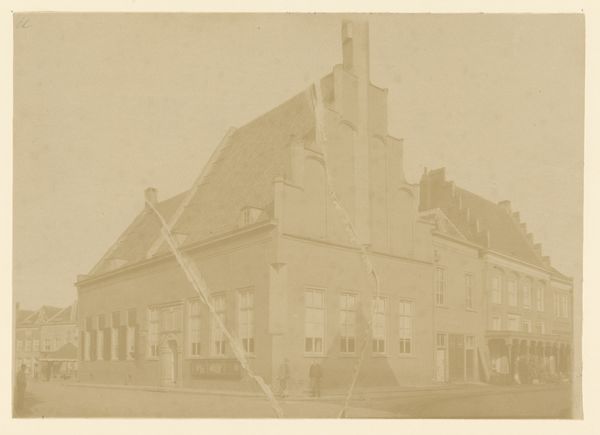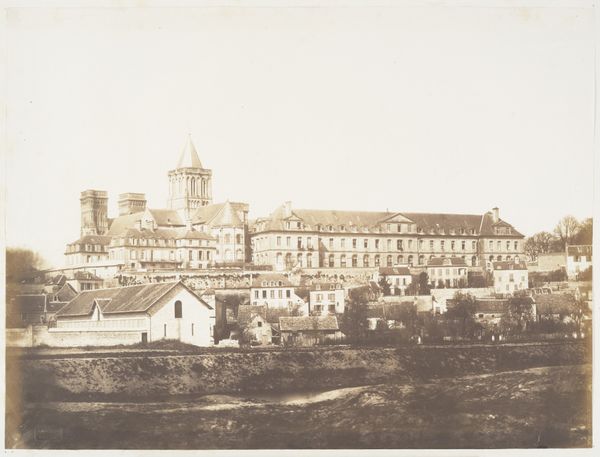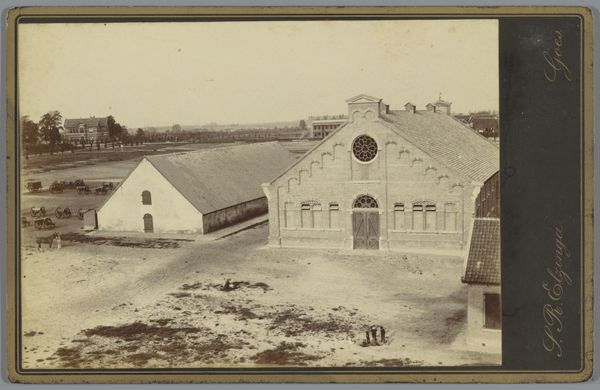
print, daguerreotype, photography
# print
#
daguerreotype
#
photography
#
cityscape
#
realism
Dimensions: height 109 mm, width 166 mm
Copyright: Rijks Museum: Open Domain
Editor: We are looking at “View of the Leidsepoort in Amsterdam,” a photograph by Andreas Theodorus Rooswinkel taken sometime between 1850 and 1862. It’s interesting how a simple cityscape, probably meant to be documentary, almost feels theatrical with its distinct buildings as set pieces. What does this scene tell us about Amsterdam at that time? Curator: That's a fantastic observation. The photograph is indeed more than just a record; it's a glimpse into Amsterdam’s urban fabric and societal values of the mid-19th century. We need to think about how photography was used at this point. Do you think the intent of this picture could be a statement in some way? Editor: A statement? About urban planning maybe? I see how orderly the buildings are arranged. Curator: Exactly. The image, despite being ‘realistic,’ has likely undergone certain modifications. It showcases progress, a kind of control and management of the physical space which reflects Amsterdam’s aspirations of the era. This idea of ‘civilizing’ the landscape. How do you think that concept could have been reflected in society at the time? Editor: Well, looking at how the cafe and theatre are prominently shown makes me think that the expansion of leisure and public life was becoming a more significant part of daily life, perhaps signifying progress as well? Curator: Precisely. This photo gives viewers a glimpse into the burgeoning bourgeois society of Amsterdam. So it represents more than just brick and mortar. How fascinating! Editor: It really does reshape how I think about "realism." Thanks! Curator: My pleasure. I think that is also important in today’s society. It seems as though some things don’t change.
Comments
No comments
Be the first to comment and join the conversation on the ultimate creative platform.
